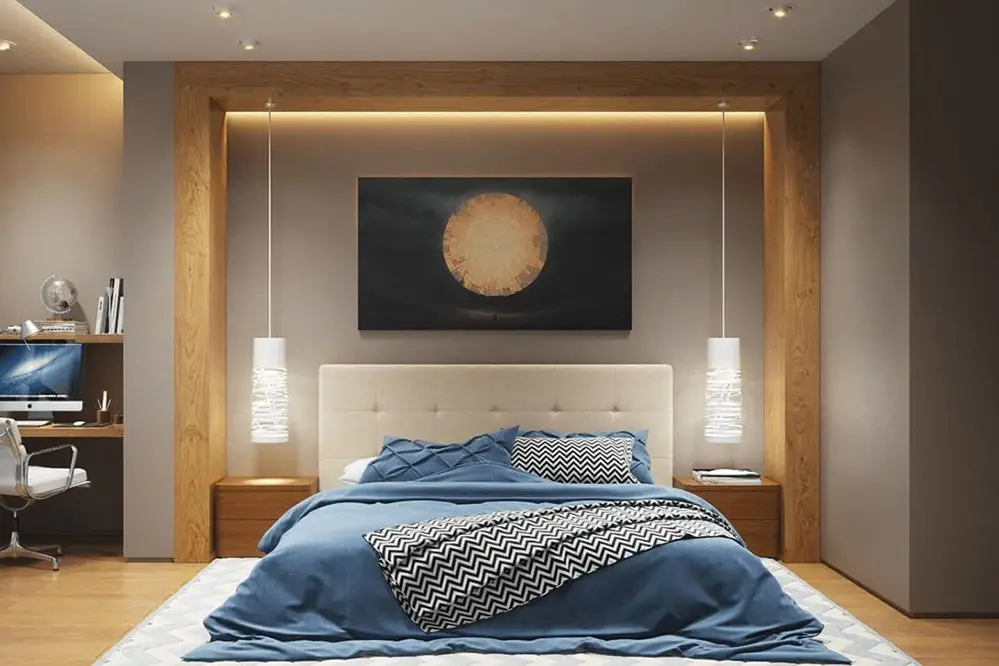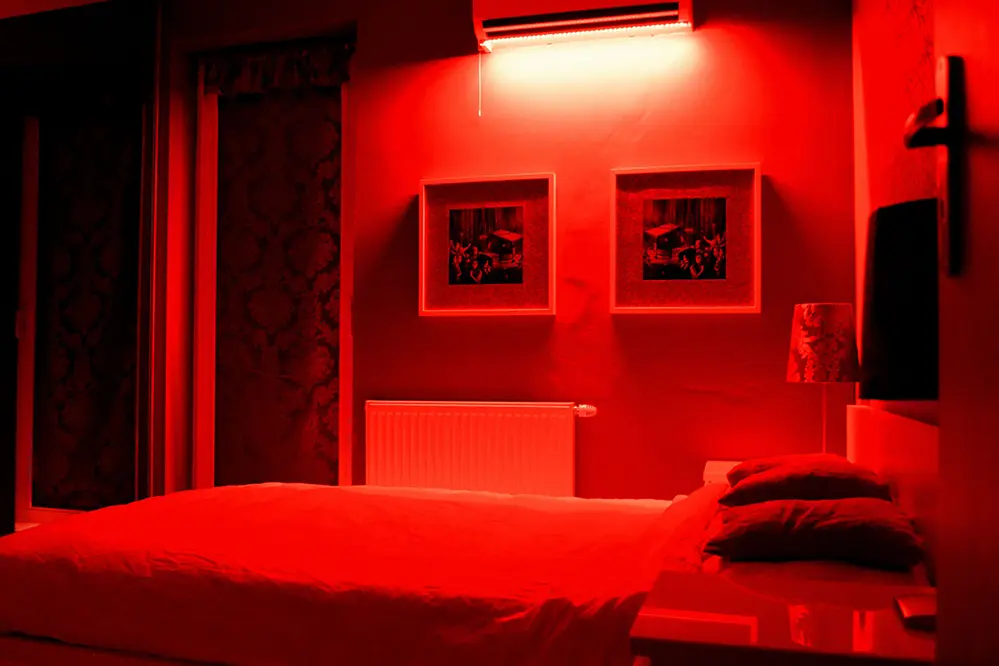In the quest for a good night’s sleep, many have turned to LED lights, but the question remains: what color LED light helps you sleep better? With a wealth of research and expert insights, this blog post will illuminate the answer and guide you towards restful nights.
The answer lies in the calming hues of red and amber LED lights. These colors are known to promote relaxation and enhance melatonin production, making them ideal for sleep.
Discover the science behind these soothing colors and learn how to optimize your sleep environment for the best rest possible. Keep reading to transform your nights and wake up refreshed.
Importance of Sleep Quality

Achieving quality sleep is essential, influencing both physical health and mental well-being.
Studies reveal that poor sleep quality is a significant contributor to various health issues, including weakened immune function, increased stress levels, and impaired cognitive performance. Therefore, prioritizing sleep is paramount to maintaining optimal health and achieving peak productivity.
Professionally, sleep quality directly impacts a person’s performance throughout the day. By ensuring restful nights with appropriate lux levels, individuals can improve their focus, decision-making abilities, and overall workplace efficiency, fostering a dynamic and productive work environment.
In their quest for better sleep, one must consider environmental factors, such as lighting, that contribute to creating a conducive sleep atmosphere. Optimizing these conditions can facilitate deeper, more restful sleep, consequently enhancing their overall quality of life.
Influence of Light on Sleep
Light significantly affects sleep, influencing the circadian rhythm and overall quality of rest.
Humans are biologically wired to react to light cues.
Exposure to specific wavelengths of artificial light, including those used in light therapy, can stimulate or suppress melatonin production, the hormone responsible for regulating sleep cycles. Understanding these influences is vital for optimizing sleep environments and enhancing rest quality.
Blue light, emitted by screens and certain LED lights, is known to disrupt melatonin production, making it harder to fall asleep by affecting a specific part of the LED spectrum. Conversely, red or amber lights have minimal impact on the circadian rhythm, supporting a more natural transition to sleep. By strategically selecting lighting, one can significantly improve their sleep hygiene and overall well-being.
Benefits of LED Lights for Sleep

LED lights offer versatile and customizable lighting solutions that positively influence sleep environments, contributing to improved rest and rejuvenation.
They can be adjusted to emit various wavelengths that support healthy sleep.
By choosing LED lights that produce colors conducive to relaxation, such as red or amber, individuals can foster an environment that encourages better sleep quality. These colors have been shown to have minimal disruption on melatonin production, which is crucial for maintaining a healthy sleep cycle.
Furthermore, LED lights equipped with dimming capabilities allow users to gradually reduce light intensity as bedtime approaches, mimicking natural sunset cues. This practice can enhance the body’s natural inclination toward restfulness, aiding the transition from wakefulness to sleep and promoting a more consistent and restorative sleep pattern.
Ideal LED Light Colors for Sleep
Scientific studies underscore the importance of selecting the right LED light colors for sleep, with red and amber emerging as the optimal choices. These colors uniquely support the production of melatonin, the hormone responsible for regulating sleep cycles. Additionally, they help create a tranquil ambiance that encourages relaxation and prepares the mind and body for restful slumber. This combination of scientifically-backed benefits ensures that choosing red or amber LED lights can significantly enhance sleep quality and overall well-being.
Blue Light and Sleep
Exposure to blue light before bedtime, a hallmark of modern electronic devices, can disrupt sleep. Blue light inhibits melatonin production, the hormone crucial for initiating sleep.
Awareness of the impact of blue light on sleep underscores the importance of managing screen time during evening hours. This step helps foster a more conducive environment for restful sleep.
Blue light exposure can delay the onset of sleep by over an hour.
Blue light reduction strategies include dimming screens and using blue light filters on devices. These simple measures can markedly improve sleep quality by minimizing the disruptive effects of blue light, allowing the body’s natural sleep mechanisms to function more effectively. Employing these strategies not only enhances individual well-being but can contribute to overall health and productivity.
Red Light and Sleep

Red light is emerging as a powerful tool in the quest for better sleep. Unlike blue light, which hinders melatonin production, red light has a markedly different effect.
Studies suggest that red light wavelengths can penetrate the skin and stimulate melatonin production. This natural hormone is essential for regulating the sleep-wake cycle, making red light an advantageous choice.
Employing red LED lights in the evening hours can transform the bedroom into a sanctuary of restfulness. It provides a soothing environment that promotes relaxation, a crucial step for individuals looking to enhance their sleep quality sustainably.
By aligning lighting choices with the body’s natural processes, one can significantly improve their sleep patterns. This simple yet effective strategy underscores how thoughtful, science-backed decisions can have a profound impact on overall well-being. Thus, incorporating red LED lights into nightly routines is not just beneficial—it is a step toward holistic health and rejuvenation.
Amber Light and Sleep

Amber light emerges as a promising ally in fostering better sleep, offering a gentle transition to nighttime restfulness.
- Stimulates Melatonin Production: Unlike harsher blue light, amber wavelengths support the natural production of melatonin.
- Reduces Eye Strain: The soft, warm glow minimizes eye fatigue, creating a more comfortable environment.
- Enhances Relaxation: Amber light helps calm the mind, facilitating relaxation and preparing the body for sleep.
- Promotes Circadian Rhythm: Aligning with the body’s internal clock, it ensures a smoother transition from day to night.
- Creates a Relaxing Atmosphere: The warm ambiance sets the tone for winding down, contributing to sleep readiness.
Utilizing amber light can effectively ease the journey towards a restful night’s sleep.
By incorporating it into nightly routines, individuals may find their sleep quality significantly improves.
Creating a bedroom environment illuminated with amber LED lights fosters a soothing, sleep-conducive atmosphere.
Choosing the Right LED Light Color
One might wonder which LED light color can optimize sleep quality during nighttime hours.
Research indicates that amber light has significant benefits.
Therefore, it’s no surprise that many experts now recommend incorporating amber lighting into their nighttime routines to promote better sleep and overall well-being.
Amber light is gentle on the eyes, provides a calming effect, and enhances the body’s natural sleep mechanisms, making it an excellent choice for bedrooms.
This strategic choice supports melatonin production, reduces eye strain, and promotes a serene atmosphere.
Practical Tips for Using LED Lights
Setting up LED lights effectively can dramatically improve the quality of one’s sleep.
Sleep specialists have advised using amber LED lights in the evening. This color fosters a tranquil environment and minimizes disruption to the body’s circadian rhythm.
Implementing dimmable bulbs can further enhance the sleep-friendly atmosphere. This allows individuals to adjust the light intensity according to their comfort as they get closer to bedtime, gradually preparing the body for restful sleep.
Consider positioning LED lights in locations that indirect light sources, minimizing direct exposure to the eyes. This approach aids in creating a more relaxing and less stimulating environment conducive to winding down.
Ultimately, combining these tips with a consistent nighttime routine ensures that the benefits of using amber LED lights are maximized for better sleep.
FAQs
Is purple LED light good for sleep?
Many are curious about the benefits of using purple LED light for sleep, especially given the myriad of lighting options available today. The color purple embodies a unique blend of blue and red hues, often associated with tranquility and calmness.
Research delves into the effects of different wavelengths on sleep quality. Studies indicate purple light has both calming and stimulating properties. This duality stems from its combination of blue and red wavelengths, leading to varying impacts on individuals.
Intriguingly, the calming attributes may come from its similarity to blue light. Blue light is known for promoting relaxation when used in moderation. Conversely, purple LEDs can sometimes stimulate brain activity due to the presence of blue wavelengths.
Despite these considerations, the efficacy of purple light for sleep remains a topic of debate. Individual responses to purple light vary significantly, making it a less universally recommended option. Given this variability, it is crucial to personalize lighting choices based on one’s unique circadian rhythm.
Exploring diverse LED colors, such as warm red or amber tones, may yield more consistent sleep-enhancing results. These colors tend to have more widely recognized benefits for promoting better sleep patterns. In conclusion, while purple LED light holds potential, further research and individual experimentation are vital for optimized sleep environments.
Is blue LED light good for sleep?
Blue LED light, ubiquitous in modern screens and lighting, can impact sleep quality adversely.
Research indicates that exposure to blue light suppresses melatonin production.
This hormone is essential for regulating the sleep-wake cycle, making blue light detrimental to sleep.
Reducing exposure to blue LED light in the evening enhances one’s ability to fall asleep. Employing alternatives, such as warmer light hues, can foster better sleep hygiene and overall health. Consequently, adopting lighting habits that minimize blue light exposure is beneficial for those seeking to optimize their sleep environment.
Is red LED light good for sleep?
Recent studies suggest that certain colors of LED lights may significantly influence sleep quality.
Scientific research indicates that red LED light has a soothing effect, conducive to a restful night’s sleep. Red light, with its longer wavelengths, is less likely to disrupt the circadian rhythm compared to blue or white light. This stability in biological rhythms promotes a deeper, more restorative sleep.
Interestingly, individuals who incorporate red LED lights into their nighttime routines often experience improved sleep patterns. This enhancement is attributed to red light’s minimal impact on melatonin production, a hormone intricately linked to sleep regulation.
In practice, using red LED lights in bedrooms or sleep areas can have profound effects on overall well-being. By fostering an environment that aligns with the body’s natural sleep mechanisms, red light can help achieve a tranquil and rejuvenating slumber. This uniquely supportive role of red LED lighting makes it an excellent choice for those aiming to enhance their sleep quality.
Summary
Amber LED lights are recommended for better sleep as they support sleep patterns by reducing wavelength exposure that negatively impacts melatonin production. Their warm hue promotes relaxation and comfort, creating a peaceful environment without overstimulating the senses. Using dimmable amber LEDs aligns with the body’s natural preparation for sleep, fostering a conducive environment for rest. Focusing on amber LED lights and maintaining a consistent sleep schedule can enhance sleep quality and overall well-being.





